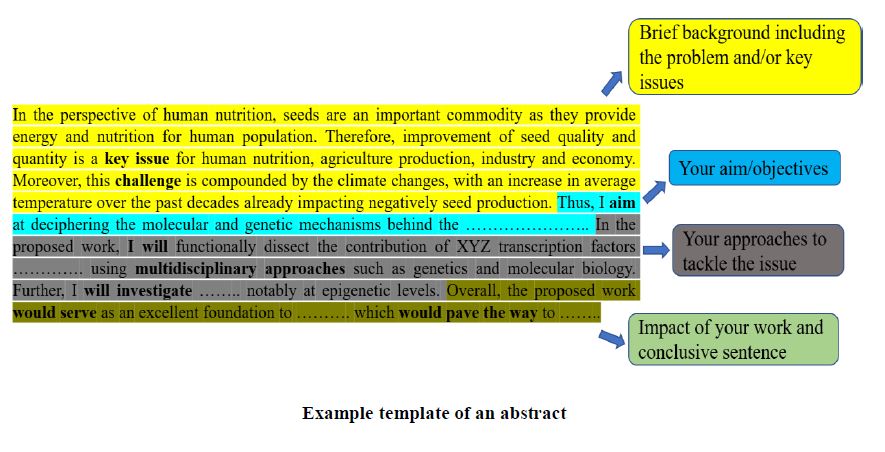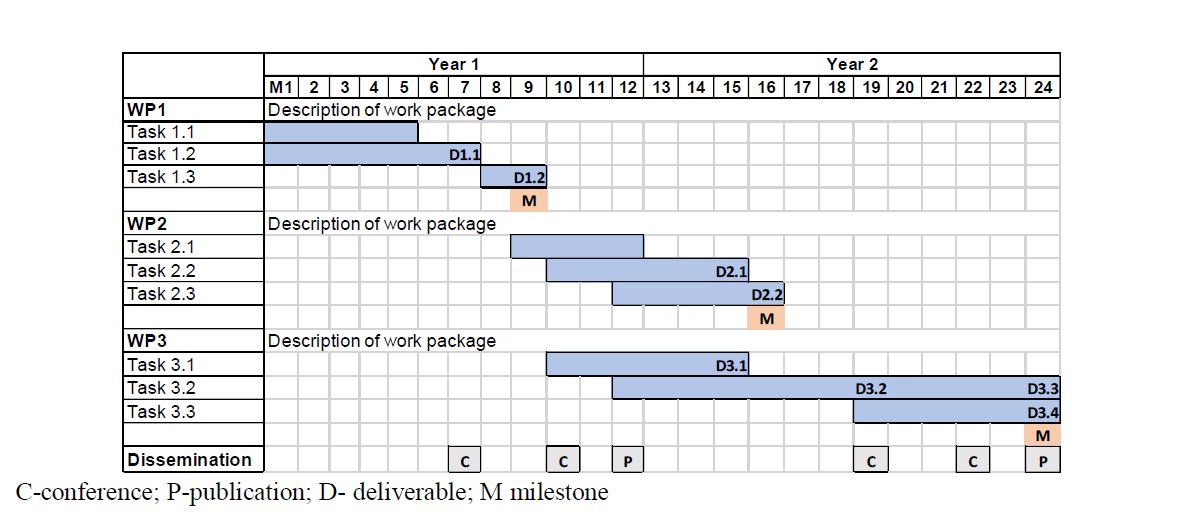Writing a winning grant proposal
“Always use your imagination and original way to make your proposal. Take inspiration but do not copy others”
1. Carefully read the guidelines and proposal template
There are specific guidelines and minimum standards such as font size, line spacing, no. of pages, footnotes, and headers that must be strictly followed when writing a proposal. You should find the proposal template on the call page of the respective grant agency. Try to understand what evaluators are looking for.
2. Components of a scientific proposal
2.1 Tile
✓ The title should be concise and descriptive.
✓ It must be informative and catchy.
✓ The title should provide keywords for indexing and classification of the project.
2.2 A summary or abstract
Your abstract should include the following information:
✓ Brief background or introduction
✓ The problem
✓ Hypothesis-driven approach
✓ Aim and/or objectives
✓ The impact of your project, e.g., on the research field and your personal research profile
Example

2.3 Introduction
✓ Describe the key issues or problems that need to be solved with relevant background information. ✓ Lead the reviewer from the general problem to the specific one.
✓ The quality and credibility of your project can be reflected by the problem you are addressing and how you are going to solve it.
✓ Novelty should reflect in your aim, approach (methods or concepts), and outcomes.
✓ Clearly state the knowledge gaps and your hypothesis.
Note: Your reviewer is not always an expert, so try not to write too complicatedly.
2.4 State-of-the art (SOTA)
✓ In SOTA, describe the information, scientific knowledge (based on published data) available on your topic, hypothesis, and specific aim, and the gaps that need to be filled.
✓ Always mention if your host lab has some preliminary data or results as a foundation of your proposal.
Note: You can also make subheadings here to make SOTA easy to understand.
2.5 Project objectives
✓ Mention main and specific scientific objectives (2 to 3). Do not be over-ambitious.
✓ Consider the project duration and recognize the resource constraints while designing the objectives.
2.6 Detailed project description and methodology
✓ In this section, organise your project into work packages (WPs) (preferably 4 to 5). Describe the link between the objectives and the WPs: how will the objectives be achieved through the WPs.
✓ Describe what methodologies, approaches you are going to use in each WP.
Note: It would be advantageous if you are going to use cutting-edge tools and methods (always highlight them). Here also you should highlight the novelty and inter-disciplinary aspects by mentioning novel methods or approaches. To make it easier, you may divide your work packages into tasks already in this section.
2.7 Implementation
✓ This section is meant to describe the timely execution of your project. You have already defined the WPs, perhaps, even the tasks (in the previous section). If not, the best way is to divide your WPs into tasks. Furthernore, each WP should indicate deliverable, milestone and risk (if any).
✓ Mention the risks and possible contingency plan associated with your experiments, methodologies in each work package.
✓ Add the Gantt chart. This chart shows the timeline of activities.
✓ Mention dissemination activities such as conferences and paper publication in the Gantt chart.
2.8 References
Cite relevant references (not too many) only throughout the proposal except for the abstract.
C-conference; P-publication; D- deliverable; M milestone
Example of a Gantt chart of a two-year project

3. Points to be noticed
✓ Write clearly and simply- powerful writing is lean and clean and it is easy to read and easy to understand.
✓ Stop being superfluous: Using long sentences, big fancy words does not make you sound smart.
✓ If possible, use figure or graphical abstract to describe your proposal.
M123456789101112131415161718192021222324WP1Task 1.1Task 1.2D1.1Task 1.3D1.2MWP2Task 2.1Task 2.2D2.1Task 2.3D2.2MWP3Task 3.1D3.1Task 3.2D3.2D3.3Task 3.3D3.4MDissemination CCPCCPDescription of work packageDescription of work packageDescription of work packageYear 1Year 2


